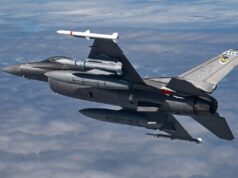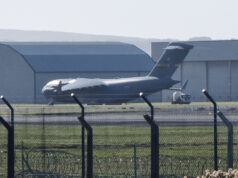NATO has marked a new milestone in its Agile Combat Employment (ACE) programme, with a Norwegian C-130J Super Hercules carrying out its first-ever landing on Denmark’s Lakolk Beach on 14 August 2025.
The event, led by Denmark, involved participation from Belgium, Germany, Norway and Sweden, underscoring NATO’s commitment to flexible and dispersed air operations.
According to NATO, ACE strengthens resilience by allowing Allied aircraft to operate from non-traditional locations, including “beaches, highways and remote airstrips — ensuring mission continuity even if traditional air bases become compromised.”
The Royal Norwegian Air Force confirmed the significance of the beach landing, stating: “This is the first time a Norwegian Hercules aircraft has performed such a landing – an important milestone in the Air Force’s work with Agile Combat Employment (ACE).”
The training centred on short-runway landings, sharpening crews’ ability to deploy aircraft and equipment under austere conditions.
Major Geir Magnussen, a pilot with the Royal Norwegian Air Force, highlighted the challenges: “What we train on is simply doing short-run landings on ‘unprepared surface’. That is, anything other than asphalt. The runway is right down to the minimum length of what we can tolerate and use with transport aircraft. We then fly at lower speeds than normal, and the goal is to land within a marked box that is only 500 feet long.”
NATO said the drills underline its readiness and adaptability. The Alliance stressed that “these joint efforts demonstrate the Alliance’s commitment to readiness and interoperability and reflect NATO’s capacity to adapt swiftly, operate flexibly and reinforce deterrence — wherever and whenever required.”














Ahh, Danish. 🐖🐖
Pretty standard stuff for the RAF ATF I believe. Hercs and now Atlas have landed at Pembrey Sands many times.
Yes those C130’s look like pretty useful pieces of kit. Just the thing for the Para’s and special forces.